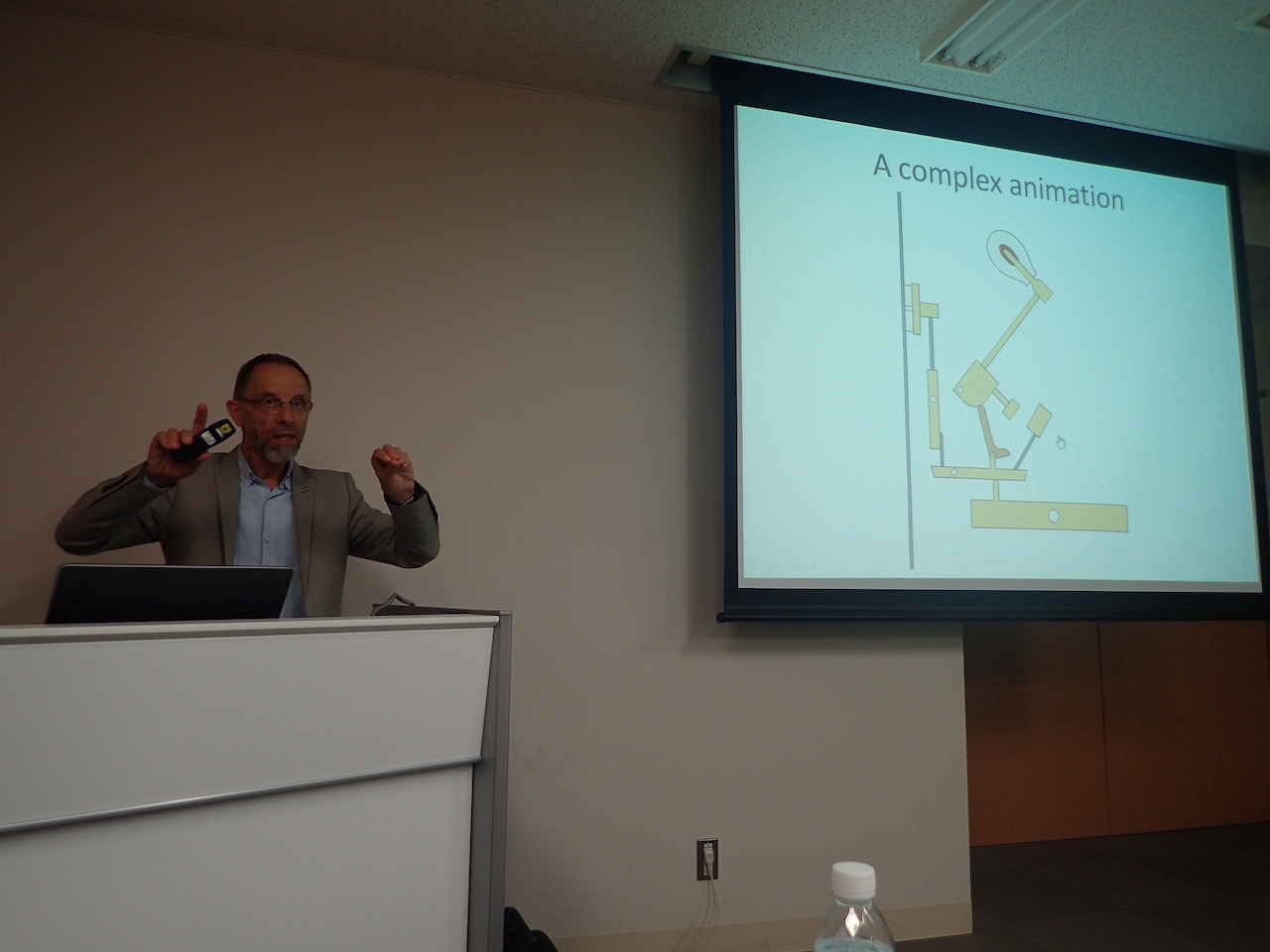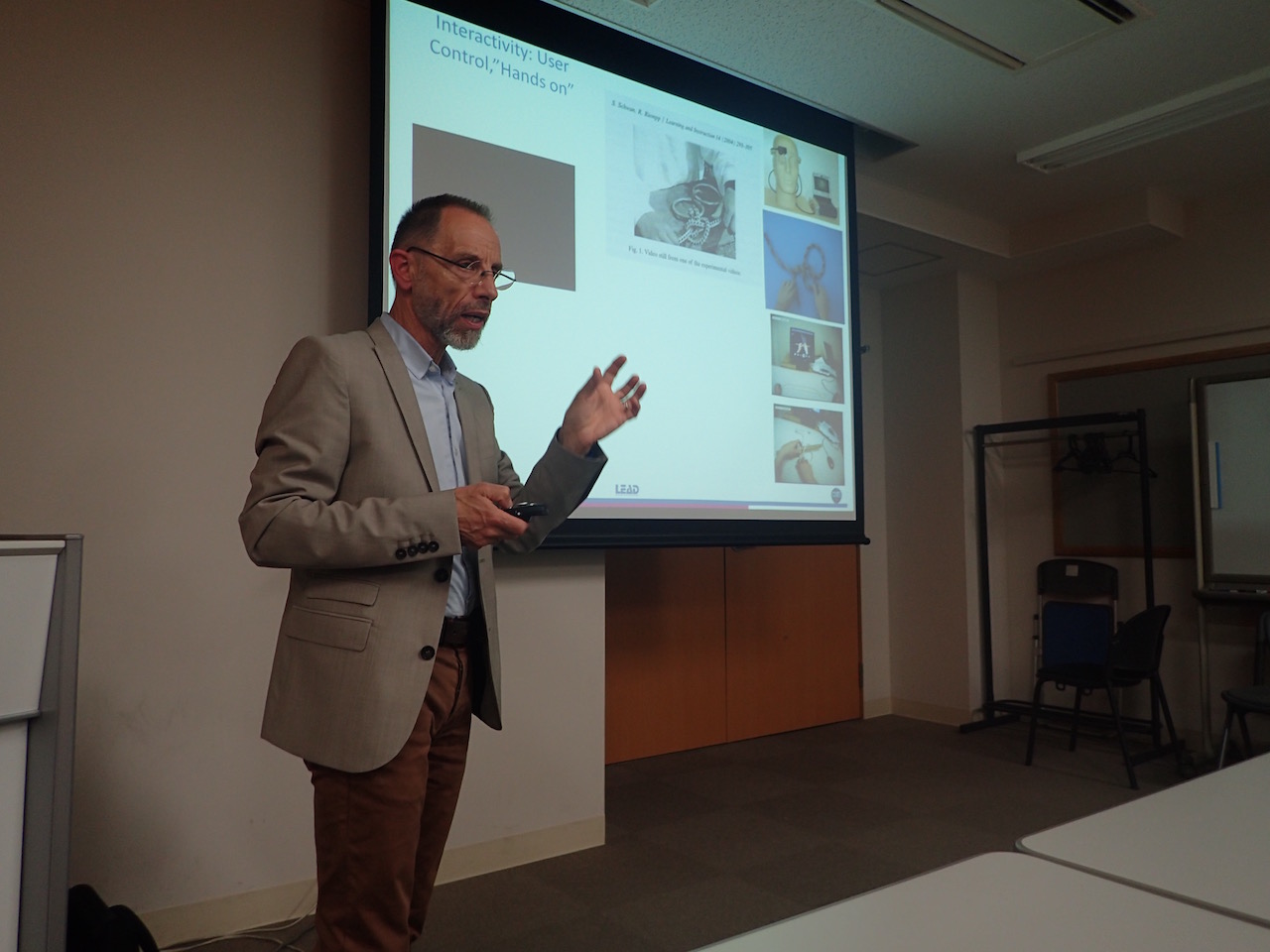Learning from dynamic visualizations, are they as good as we think?
Speaker: Professor Jean-Michel Boucheix (Université Bourgogne)
Date and Time: Wednesday, May 11, 2016 16:45-18:45
Location: 216, 2nd Floor Faculty of Education Main Bldg., Kyoto University
http://www.kyoto-u.ac.jp/en/access/yoshida/main.html (No.21 on the map)
https://www.google.com/maps/place/35°01’40.2%22N+135°46’52.0%22E
No registration necessary
Sponsored by: Collaborative Graduate Program in Design (Design School) and
Graduate School of Education, Kyoto University
Contact: manalo.emmanuel.3z[at]kyoto-u.ac.jp(Please change [at] to @.)
Emmanuel Manalo (Professor, Graduate School of Education)
Abstract:
Animated explanations are increasingly used in technology-based learning materials for presenting diverse types of subject matter. They are particularly favoured when the topic to be learned is complex and known to be difficult for students. The recent swing towards animations reflects a common assumption that they are intrinsically superior to traditional forms of information such as text or static pictures. However, recent research shows that animations are not always as educationally effective as is widely believed. The problem is that the advantages animations have in directly showing how things change over time must be offset against the disadvantages they have because of the demands they make on learners. Internalizing the information about complex subject matter can be demanding for learners when it is presented in an animated format. This presentation will begin by explaining what features of animations can cause them to be demanding by discussing visual and mental challenges they may pose for learners. To appreciate why these challenges arise, we must first put ourselves ‘in the learner’s shoes’ and take account of what students see (and don’t see) in animations. We then need insights about how learners make sense of the activity depicted in the animation in order to understand the subject matter it portrays. Researchers in educational psychology have recently investigated these aspects of learning from animation using techniques such as eye tracking (to determine what students look at) and simulation tasks (to determine what they comprehend). The second part of the presentation will show how insights from this research have been used to devise practical approaches for improving learning from animation. These approaches are based on the Animation Processing Model (Lowe & Boucheix, 2008, 2016), which deals with the individual processing activities that learners need to carry out in order to understand animated explanations. A fundamental feature of these approaches is the provision of support that helps to guide learners to key information in the animation. Concrete examples of the interventions devised on the basis of this research will be presented together with the latest ideas on how to improve the design of educational animations. The presentation will conclude with a discussion of possibilities for using animations and multimedia presentations more effectively in different educational areas.
ジャン=ミシェル・ブシェ氏は、フランスのディジョン市にあるブルゴーニュ大学の認知心理学と人間工学研究を専門とする教授である。新しい学習技術の学習と開発を認知モデル化することを主に目指しているLEAD(Laboratoire d’Etude de l’Apprentissage et du Développement-Laboratory for the Study of Learning and Development)と共に研究している。この講演会では、教授と学習の状況において動的図表の有益な使用方法について説明する。
Introduction: Jean-Michel Boucheix
Jean-Michel Boucheix is a Professor at the University of Burgundy, “Université de Bourgogne”, Dijon, France. He works with LEAD, the Laboratory for the Study of Learning and Development (Laboratoire d’Etude de l’Apprentissage et du Développement), the main goal of which is cognitive modeling of learning and the development of new learning technologies.
Professor Boucheix specializes in cognitive psychology and ergonomics. His areas of research interest include: experimental psychology of learning technologies and training; cognitive processing of multimedia documents and virtual reality, in particular, the understanding of interactive animations in science and technology; learning with high and low fidelity simulator; and eye movement and processing of visual scene and multimedia presentation.
Regarding the educational area, Jean-Michel Boucheix is conducting research on the perceptual and cognitive processes involved in learning and understanding from instructional animations, videos, and virtual reality. He is also testing different ways to improve animations presentations to learners. The overall goal of this research is to improve learner’s comprehension of complex dynamic phenomenon.
Jean-Michel Boucheix is also responsible for a Master degree, diploma in cognitive and educational psychology, at the University of Burgundy.
Report:
教育学研究科では、平成28年5月11日、17時から教育学研究科本館2階216号室にてBoucheix教授講演会を開催しました。
本講演会では、学内外の研究者、大学院生およびこの分野に関心のある方を対象に、フランスのディジョン市にあるブルゴーニュ大学の認知心理学と人間工学研究を専門とする教授を招き、最前線の研究を紹介してもらい、議論することを目的として開催されました。Boucheix教授は、新しい学習技術の学習と開発を認知モデル化することを主に目指しているLEAD(Laboratoire d’Etude de l’Apprentissage et du Developpement-Laboratory for the Study of Learning and Development)で研究しています。この講演会では、教授と学習の状況において動的図表の有益な使用方法について焦点をあて心理実験に基づく最新研究成果についてお話いただきました。
また、講演後には、Boucheix教授を囲んで、大学院生や研究者が参加して、研究に関するインフォーマルな意見交換を2時間ほど行いました。参加した院生は、研究に関してコメントをもらったり、質問をしたりしました。
2つの行事を通して、参加者は、認知心理学と人間工学研究に関して多くを学び、刺激を受けました。


京都大学 デザイン学大学院連携プログラムKyoto University PAGE TOP